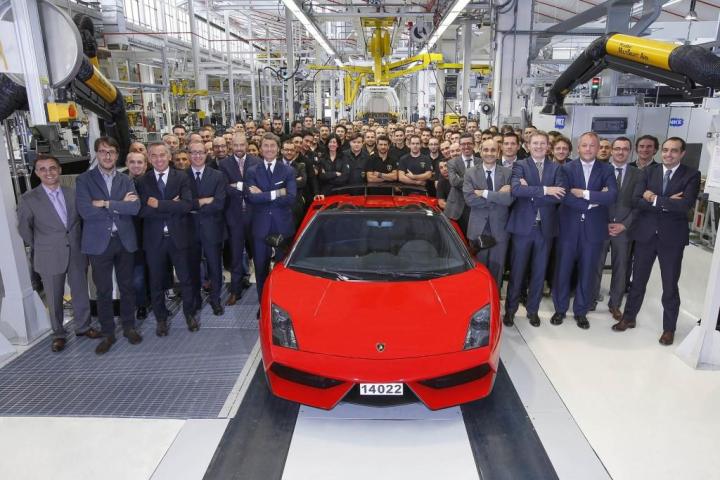
It’s the end of an era at the Lamborghini factory in Sant’Agata Bolognese. goodbye
The last Lamborghini Gallardo – a Rosso Mars (red) LP570-4 Spyder Performante convertible – is on its way to a very lucky owner.
The Gallardo was introduced at the 2003 Geneva Motor Show, coinciding with Lamborghini’s 40th anniversary. It was Lambo’s “entry-level” model, and helped increase the company’s sales during its 10 years in production.
Over those 10 years, 14,022 Gallardos were built, making this V10-powered supercar Lamborghini’s best-selling model ever.
So while you’re unlikely to see a Gallardo on every street corner, it was a significant move for a low-volume manufacturer. Since the Gallardo’s 2003 launch, Lamborghini says average yearly production jumped from 250 cars per year to 2,000.
All of those cars were true Italian supercars. The Gallardo may have been (slightly) more practical than the Murcielago or Aventador, but it was still worthy of its raging-bull badge.
The original 2003 Gallardo’s 5.0-liter V10 produced 492 horsepower, but Lamborghini made constant improvements over the years. It added hardcore models like the Superleggera and LP550-2 Valentino Balboni – the first rear-wheel drive Lambo in recent memory – and the LP570-4 Squadra Corse.
That final Gallardo LP570-4 Spyder Performante has a 5.2-liter V10 that makes 562 hp. It will do 0-62 mph in 3.9 seconds.
Time marches on, though. Just as the Murcielago was replaced by the Aventador, so the Gallardo will be replaced with a new model, likely called Cabrera. The new car is expected to use an updated version of the current 5.2-liter V10, and will make its first appearance next year.


